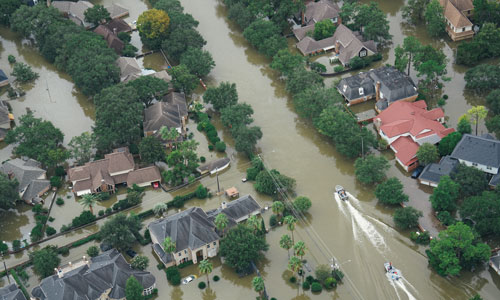With Hurricanes Harvey and Irma still fresh on the minds of government officials and residents around the country, many are focused on the issues immediately at hand: rebuilding and cleaning up.
However, scientists and weather officials are looking at the long term as storms like Irma and Harvey increase not only in frequency, but intensity. A stark piece of evidence is the temperature of the Atlantic Ocean, which, according to the National Oceanic and Atmospheric Administration, is 0.5 to 1 degree Celsius warmer this summer than last, NPR reported.
Climate change is transforming the entire world, and recent research from Zillow shows that the U.S. housing market is no exception. While we’ve all seen pictures of residential destruction from recent hurricanes, the numbers paint just as bleak a picture:
- 185,149 homes estimated to be damaged or destroyed by Hurricane Harvey
- 25 percent of homes in the Florida Keys destroyed with 65 percent more incurring damage from Hurricane Irma
- About $2 billion in damage from Irma
- An estimated $97 billion in damage from Harvey
While hurricanes’ reach has mostly been limited to coastal states, the Zillow data reveals that could grow: by the year 2100, climate scientists estimate that almost 300 cities would lose at least half of their homes and 36 cities could be wiped off the map entirely.
By that year, experts estimate that sea levels will have risen 6 feet if climate change isn’t slowed, meaning hurricanes will grow in intensity, frequency and physical reach. According to Zillow, 2 percent of homes in the country — nearly 1.9 million — are at risk of being underwater. If they go underwater, it would account for $882 billion in losses.
Bolstering building codes
As municipalities around the country try to prevent further damage in severe weather events, a proactive approach many are taking is to strengthen building codes for both public and private structures. In wind- and flood-prone areas, homebuyers may be more interested in homes that are built to withstand such damage.
Florida took such steps after the destruction of Hurricane Andrew in 1992, which caused $25 billion in damage. The Florida Building Code, established in 2002, is one of the strongest in the country, mandating that new buildings have strong fasteners to keep roofs in place, nails instead of staples and, in some areas, impact-resistant windows.
The Wall Street Journal recently reported that such homes are more expensive to build — as much as 45 percent more in Florida and 25 percent more elsewhere in the country — but they also often come with higher price tags for buyers. The outlet also cited a study from an Austin College professor that showed that the building code reduced losses from wind storms by up to 72 percent.

